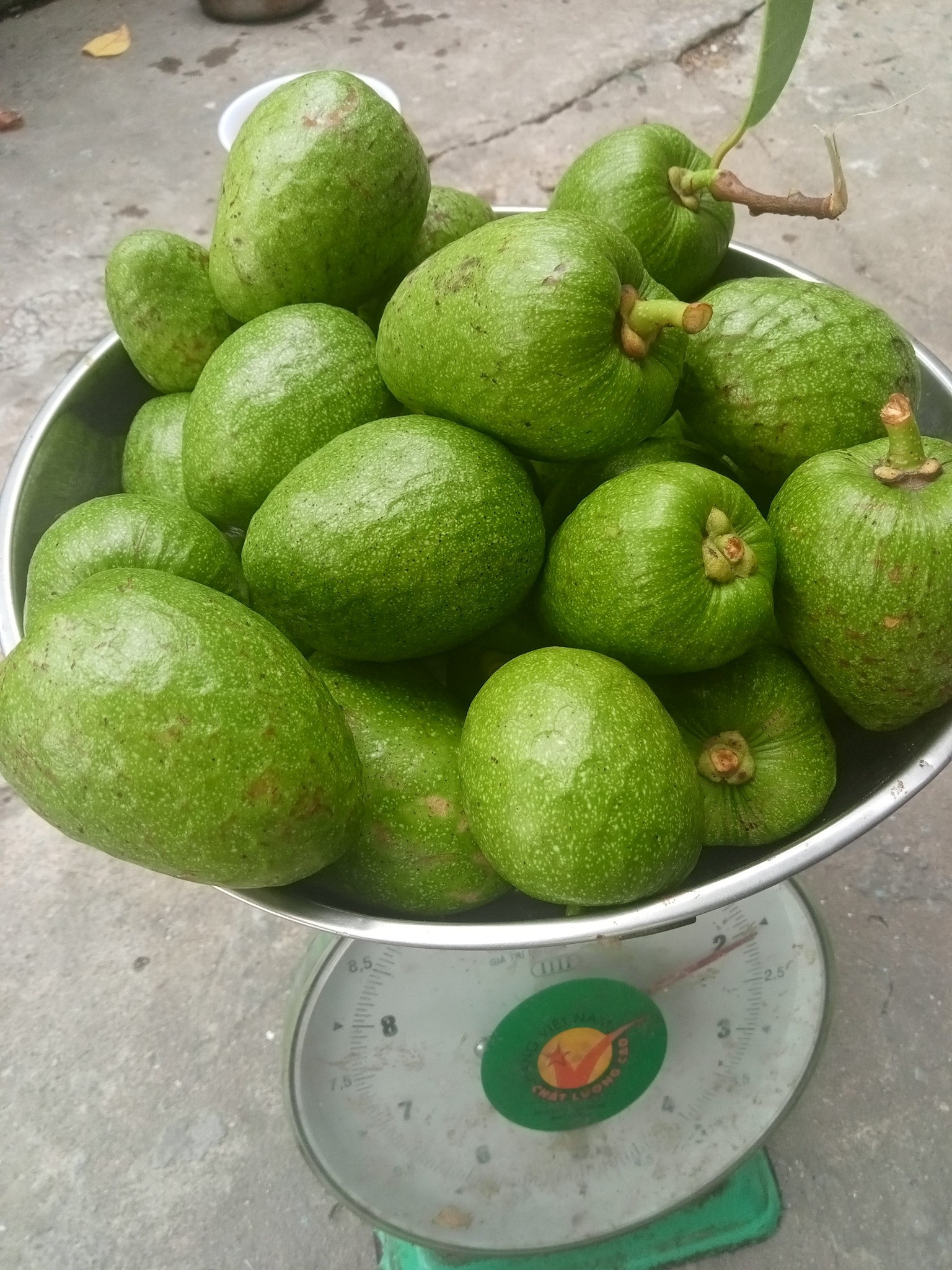The unique-looking bell fruit, or “binh bat” in Vietnamese, is a tropical delight that captivates both locals and visitors alike. In Vietnam’s bustling cities, this exotic fruit fetches a price of 40,000 to 80,000 VND per kilogram, depending on the season.
Binh bat, also known as “na dat” or “na xiêm,” is a woody tree that typically grows wild along the canals in the southern provinces of Vietnam, particularly in Soc Trang, Bac Lieu, Hau Giang, and Vinh Long. Reaching heights of 2 to 5 meters, this tree bears fruit that is beloved by many.
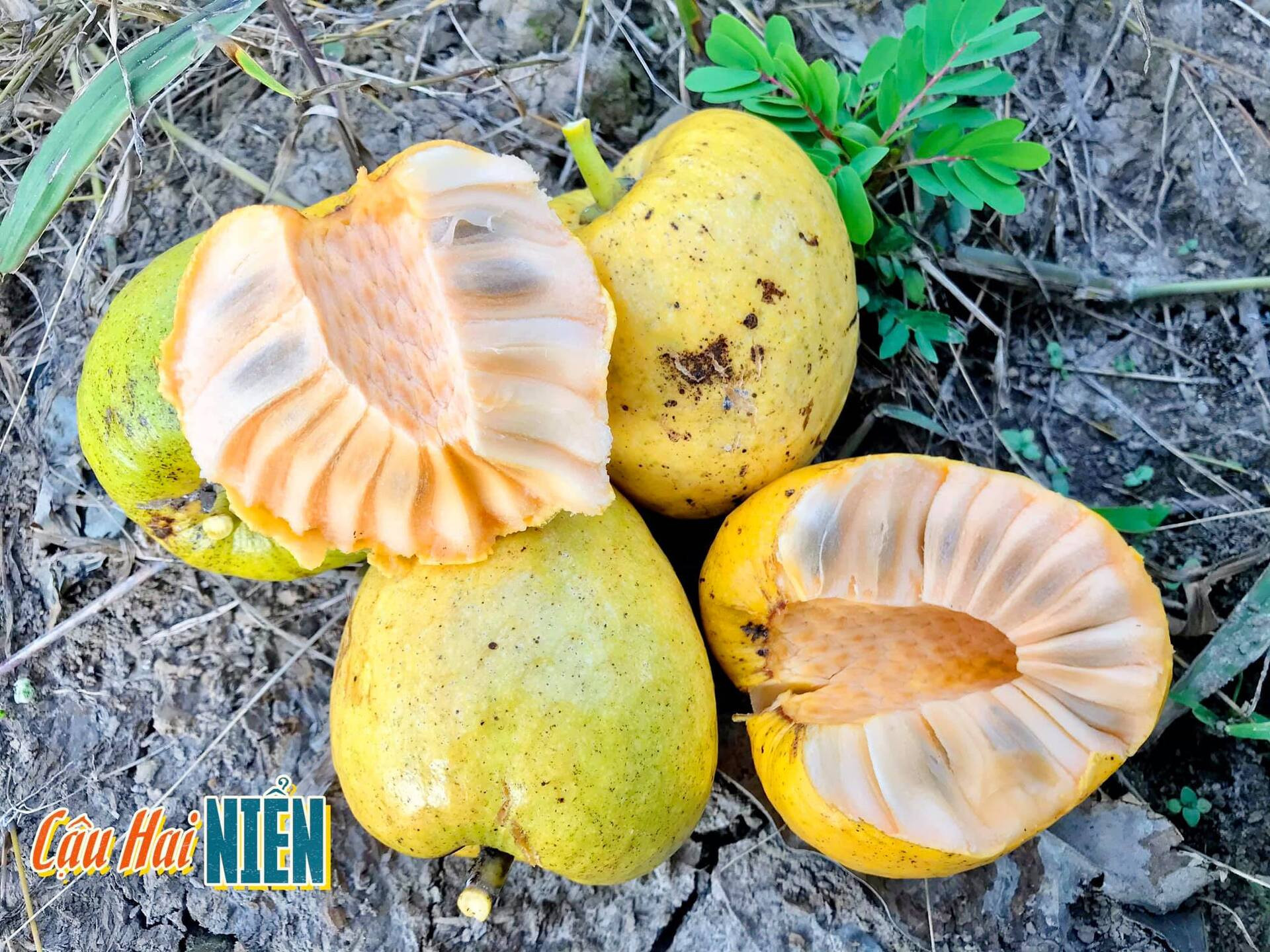
The bell fruit holds a special place in the memories of generations of Vietnamese, especially those who grew up in the 80s and 90s. Its distinctive shape and sweet fragrance are instantly recognizable.
Shaped like a heart, the bell fruit has a greenish hue when unripe and turns golden as it ripens. Its rough skin is devoid of the spikes found on its cousin, the mangosteen. Within its thick rind lies a generous helping of juicy, golden flesh, divided into segments reminiscent of a custard apple.
As the fruit matures, its aroma intensifies, and the rind cracks open to reveal the golden segments within. The taste is a delightful balance of sweet and tangy, with a hint of sourness. The bell fruit is typically harvested from April to August each year.

When ripe, the bell fruit’s skin and flesh take on a vibrant golden hue. Nature’s candy at its finest! Photo by Suốt Anh
Following a rainfall, the bell fruit often ripens and falls from the tree, spreading its seeds and ensuring the continuation of its legacy. These resilient seeds sprout into vigorous young trees that require minimal care yet produce an abundance of fruit.
“The bell fruit holds a special place in my heart,” reminisces Đỗ Suốt Anh, a native of Cà Mau, born in 1993. “As children, we would pick the unripe fruits and place them in a bag of rice. Overnight, they would ripen, filling the room with their sweet aroma. We’d eagerly mash them with sugar and share this delicious treat with our friends.”
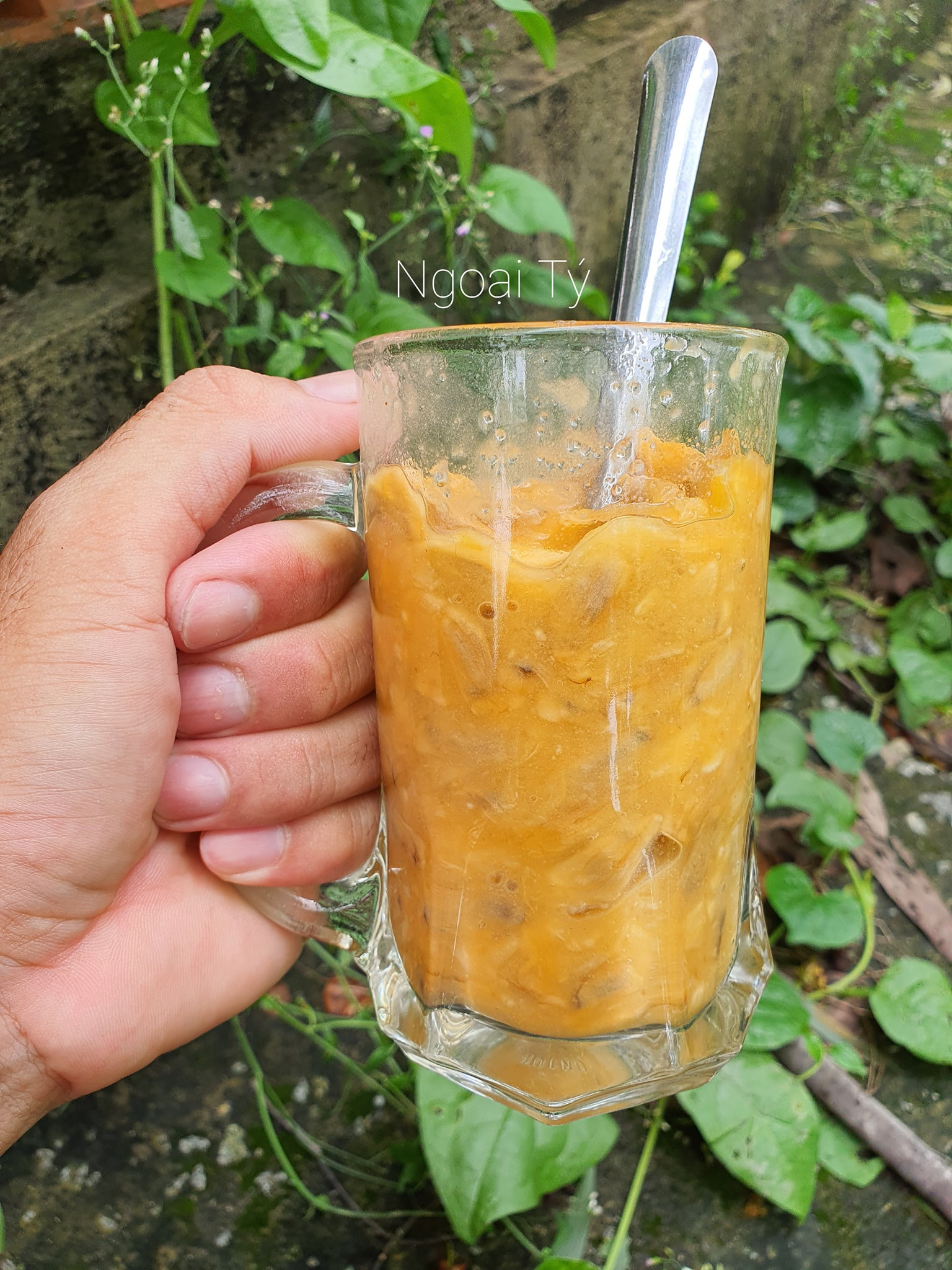
Bell fruit mashed with sugar is a refreshing treat, perfect for beating the summer heat. Photo by Suốt Anh
During the sweltering summer months, a chilled glass of bell fruit mash is a popular way to cool off. The process involves carefully peeling the fruit, mashing the golden flesh with sugar or condensed milk, and adding ice. The resulting drink is a delightful blend of sweet and tangy flavors, best enjoyed slowly to savor every mouthful.
In the past, the bell fruit tree was not highly valued for its economic potential, and many were cut down. However, in recent years, there has been a resurgence in popularity for this unique fruit, with people seeking it out for its distinct flavor and versatility.
Today, the bell fruit is used in a variety of delicious preparations, including bell fruit preserved in quince syrup, bell fruit chia seed drink, and bell fruit jelly. One of the most popular ways to enjoy it is in the form of bell fruit tea, which has become a favorite among locals and tourists alike.
At cafes and restaurants, bell fruit tea is crafted by infusing the fruit with rock sugar and a touch of quince, then chilled and served as a refreshing beverage to beat the summer heat.
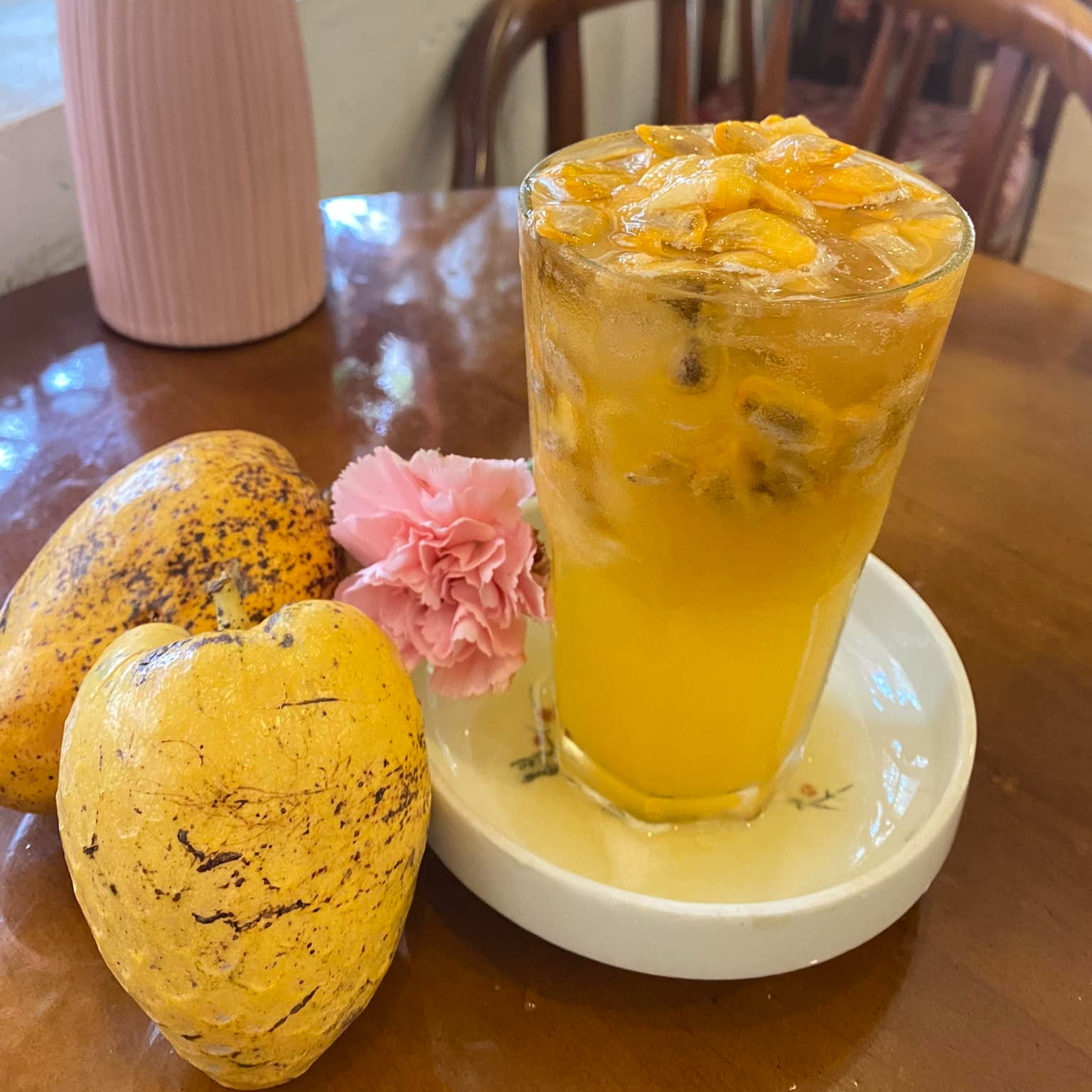
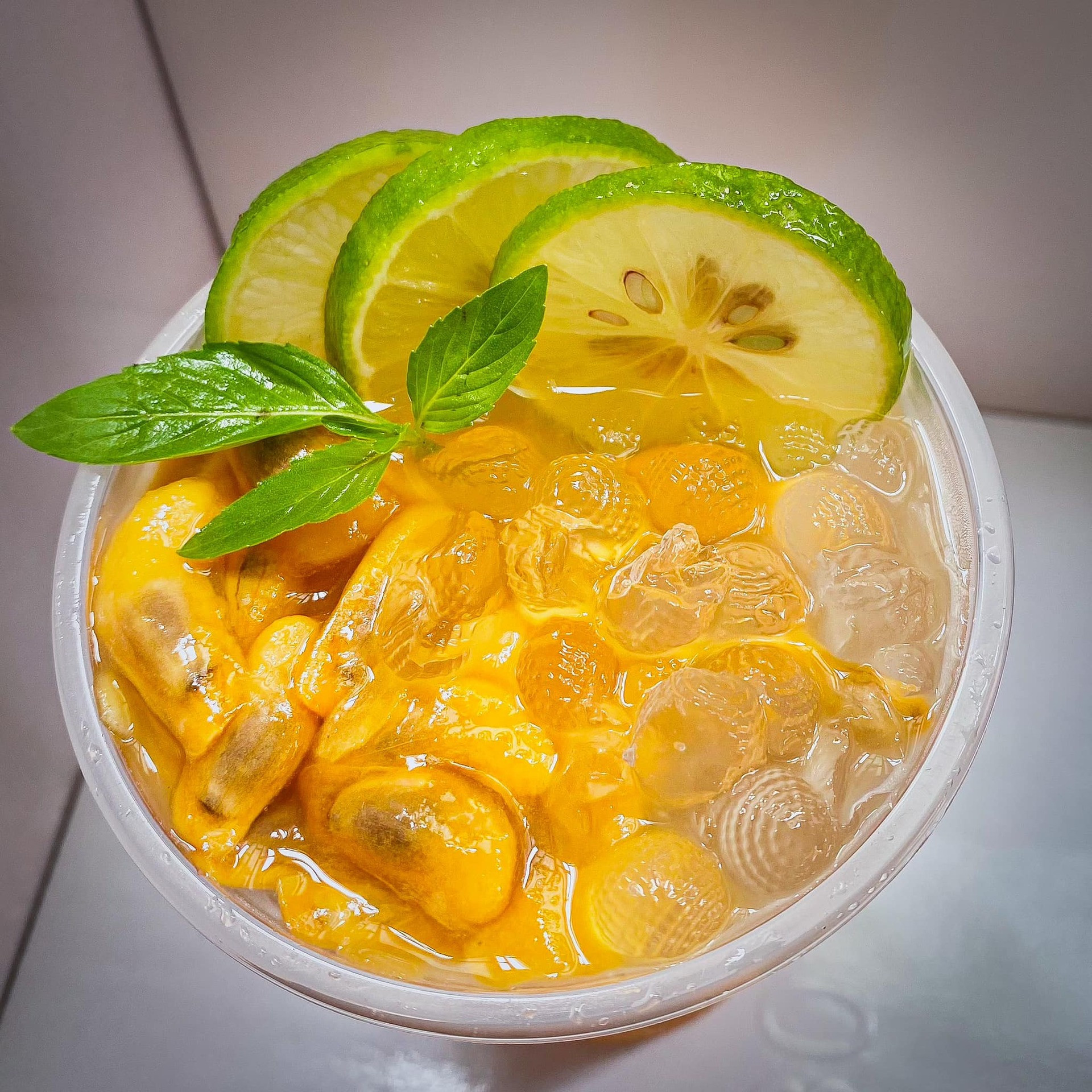
Bell fruit tea is a refreshing treat, available at many shops in Ho Chi Minh City and Hanoi. Photo by Trang To/Lê Bảo
What’s more, every part of the bell fruit tree, from its roots to its leaves and fruit, has medicinal properties, making it a valuable plant in traditional medicine.
